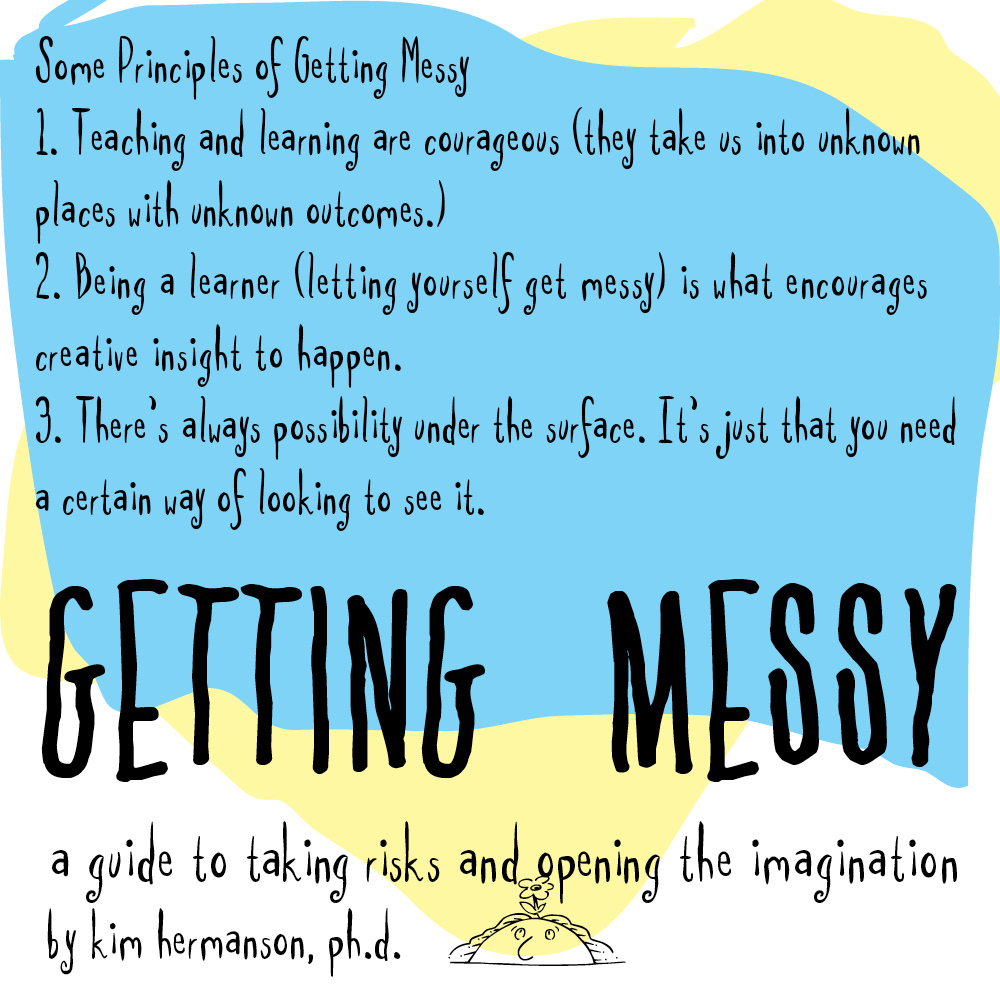
Principles of Getting Messy:
- Teaching and learning are courageous. They take us into unknown places with unknown outcomes.
- Being a learner (letting yourself get messy) is what encourages creative insight to happen.
- There’s always possibility under the surface. It’s just that you need a certain way of looking to see it.
From Getting Messy: A Guide to Taking Risks and Opening the Imagination for Teachers, Trainers, Coaches and Mentors by Kim Hermanson



